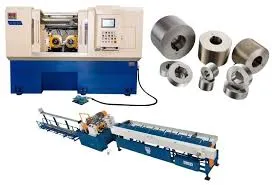
-
 Afrikaans
Afrikaans -
 Albanian
Albanian -
 Amharic
Amharic -
 Arabic
Arabic -
 Armenian
Armenian -
 Azerbaijani
Azerbaijani -
 Basque
Basque -
 Belarusian
Belarusian -
 Bengali
Bengali -
 Bosnian
Bosnian -
 Bulgarian
Bulgarian -
 Catalan
Catalan -
 Cebuano
Cebuano -
 Corsican
Corsican -
 Croatian
Croatian -
 Czech
Czech -
 Danish
Danish -
 Dutch
Dutch -
 English
English -
 Esperanto
Esperanto -
 Estonian
Estonian -
 Finnish
Finnish -
 French
French -
 Frisian
Frisian -
 Galician
Galician -
 Georgian
Georgian -
 German
German -
 Greek
Greek -
 Gujarati
Gujarati -
 Haitian Creole
Haitian Creole -
 hausa
hausa -
 hawaiian
hawaiian -
 Hebrew
Hebrew -
 Hindi
Hindi -
 Miao
Miao -
 Hungarian
Hungarian -
 Icelandic
Icelandic -
 igbo
igbo -
 Indonesian
Indonesian -
 irish
irish -
 Italian
Italian -
 Japanese
Japanese -
 Javanese
Javanese -
 Kannada
Kannada -
 kazakh
kazakh -
 Khmer
Khmer -
 Rwandese
Rwandese -
 Korean
Korean -
 Kurdish
Kurdish -
 Kyrgyz
Kyrgyz -
 Lao
Lao -
 Latin
Latin -
 Latvian
Latvian -
 Lithuanian
Lithuanian -
 Luxembourgish
Luxembourgish -
 Macedonian
Macedonian -
 Malgashi
Malgashi -
 Malay
Malay -
 Malayalam
Malayalam -
 Maltese
Maltese -
 Maori
Maori -
 Marathi
Marathi -
 Mongolian
Mongolian -
 Myanmar
Myanmar -
 Nepali
Nepali -
 Norwegian
Norwegian -
 Norwegian
Norwegian -
 Occitan
Occitan -
 Pashto
Pashto -
 Persian
Persian -
 Polish
Polish -
 Portuguese
Portuguese -
 Punjabi
Punjabi -
 Romanian
Romanian -
 Russian
Russian -
 Samoan
Samoan -
 Scottish Gaelic
Scottish Gaelic -
 Serbian
Serbian -
 Sesotho
Sesotho -
 Shona
Shona -
 Sindhi
Sindhi -
 Sinhala
Sinhala -
 Slovak
Slovak -
 Slovenian
Slovenian -
 Somali
Somali -
 Spanish
Spanish -
 Sundanese
Sundanese -
 Swahili
Swahili -
 Swedish
Swedish -
 Tagalog
Tagalog -
 Tajik
Tajik -
 Tamil
Tamil -
 Tatar
Tatar -
 Telugu
Telugu -
 Thai
Thai -
 Turkish
Turkish -
 Turkmen
Turkmen -
 Ukrainian
Ukrainian -
 Urdu
Urdu -
 Uighur
Uighur -
 Uzbek
Uzbek -
 Vietnamese
Vietnamese -
 Welsh
Welsh -
 Bantu
Bantu -
 Yiddish
Yiddish -
 Yoruba
Yoruba -
 Zulu
Zulu
buy thread rolling machine setup
How to Effectively Set Up a Thread Rolling Machine
Thread rolling machines are essential tools in the manufacturing industry, particularly for producing high-precision threaded components. These machines utilize a specific process to create threads on a workpiece by rolling it between two or more dies, which results in superior strength and durability compared to traditional methods such as cutting or tapping. However, the efficiency and effectiveness of a thread rolling machine heavily depend on its setup. This article will guide you through the essential steps to successfully set up a thread rolling machine.
Understanding Your Thread Rolling Machine
Before diving into the setup process, it's crucial to familiarize yourself with the machine you are using. Thread rolling machines come in various types, including flat die, cylindrical, and planetary types. Each type has unique specifications and requirements. Consult the manufacturer's manual for specific details about your machine's components, operating procedures, and safety features.
Preparing the Workpiece
The first step in setting up a thread rolling machine is to prepare the workpiece. The material should be free from any dirt, grease, or contaminants that might affect the threading process. Additionally, ensure that the workpiece is of the correct diameter and material type suitable for threading. A thorough inspection will help prevent issues during the production process.
Selecting the Right Die
Choosing the appropriate die is crucial for achieving the desired thread characteristics. The die should match the specifications of the thread you wish to produce, including thread profile, size, and pitch. Custom dies can be made for specialized applications, but standard dies are usually available for common thread types like UNC, UNF, and metric threads. Ensure that the selected die is sharp, properly aligned, and in good condition to prevent defects in the final product.
Setting Up the Machine
buy thread rolling machine setup

Once you have prepared the workpiece and chosen the correct die, you can begin the setup process. Below are key steps to follow
1. Alignment Proper alignment of the die and workpiece is critical. Adjust the machine’s die holder to ensure that the dies are parallel to each other and correctly positioned against the workpiece. Misalignment can lead to uneven threads and wastage.
2. Adjusting Rollers Set the upper and lower rollers to the appropriate pressure. This pressure affects how much material flows outward during the rolling process. Too little pressure may not deform the material adequately, while too much can cause overloading and damage to both the die and the workpiece.
3. Lubrication Proper lubrication is essential in reducing friction between the dies and the workpiece. Use a recommended lubricant that is compatible with the material being threaded. This can significantly improve the quality of the threads and extend the life of the dies.
4. Speed Settings Adjust the machine’s speed according to the material and thread specifications. Slower speeds tend to produce higher-quality threads but may decrease productivity. Finding the right balance is crucial for maintaining efficiency while ensuring quality.
Testing the Setup
Before starting full production, it is advisable to conduct a trial run with a sample workpiece. This helps in assessing the quality of the threads produced and provides an opportunity to make necessary adjustments to the setup. Check for dimensions, thread profile, and surface finish. If any discrepancies are noted, revisit the settings of the die, alignment, and pressure.
Conclusion
Setting up a thread rolling machine is a meticulous process that requires attention to detail and a thorough understanding of the machine and the materials being used. By following the steps outlined above, operators can ensure that their thread rolling machine is set up correctly, leading to high-quality threaded products. Proper setup not only enhances productivity but also minimizes waste and reduces costs, making it a critical skill in manufacturing processes. With practice and experience, mastering the setup of a thread rolling machine can significantly improve operational efficiency and output quality.
